|
Spring, as we know it up here, is progressing nicely. I've been hearing robins the past few mornings...such a beautiful sound! I don't realize just how silent the winter is until these songbirds come back! The snow is melting, although at times it seems to be going at an agonizingly slow rate. It may be a blessing in disguise though, since we have already had some flooding. We are expecting rain tonight and tomorrow, which won't help matters at all! Meanwhile my little windowsill garden has begun to bloom! These little flowers make my heart sing every time I see them! As I was taking those pictures, I looked up and saw this little "chippyhacky" out the window! We don't see too many of them, but I've seen this one three times today. I wonder what he is up to? The seedling population is increasing rapidly. There is even more still on my desk and every available windowsill! So far I have peppers, onions, celery, pansies, heartsease, heliotrope, mint, anise, mugwort, oregano, sweet marjoram, lemon balm, horehound, castor beans, and I'm not sure what else! I'm planting St. John's wort, lovage, basil and wormwood today. Between these baby plants and Carina's 6 lively puppies (now 5 weeks old!), I'm keeping plenty busy! The piles outside the greenhouse are slowly diminishing...I can almost see over them now! I hope you are enjoying the spring weather wherever you're at, too!
4 Comments
* This article has been moved to Heirloom Gardener. You can view it here.
Today marks one year since I rather nervously began this blog! You can see my first post (with all the original typos!) here. I hardly dared expect that anyone would read it besides a few close gardening friends! But I'm so glad I did it! It has been a lot of fun, I've gotten to know more enthusiastic gardeners, and it has already opened new doors of opportunity that I wouldn't have dreamed of a year ago! Gardening is even better when it is shared, so thank you to all of you who have subscribed, and to those of you who comment...I love comparing notes on gardening with you! 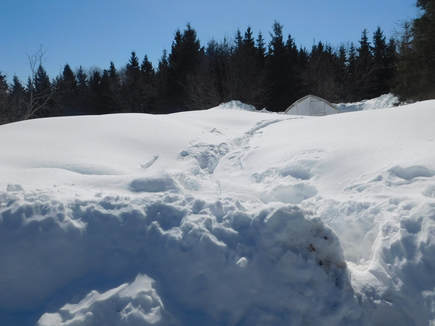 So, yesterday was officially the first day of Spring. The sun finally came out after about 2 weeks of cloudy, snowy, gloomy weather. I spent part of the afternoon in the greenhouse getting things ready, and it was actually HOT in there! Some of my seedlings are out there soaking up the light today. They had gotten a little "leggy" from being in the house so long! I'll be planting lots more seeds soon. Looking back at this time last year, (blogging is also a great way to keep a garden journal!) I already had pepper and tomato seedlings up. I haven't even planted them yet this year! There is so much to be done! I'm hoping this sunny weather will hold out. The sky is the bluest blue today, and the sun shining on all that snow is almost blinding! It also appears that we have even more snow on the ground than at this time last year. There isn't even so much as a dent in the snow to tell where my birdbath is! That's about all I have to say for now, but I just couldn't let this day pass without a mention! :)
We just dug out from a second Nor'easter yesterday. We have had over 10 feet of snow so far this winter, with about 40 inches now on the ground. So, to celebrate, I decided to post these pictures and contrast them with the same scenes in the summer! Can you believe its the same place?! My garden is over there...somewhere! The arbor now... And in August 2016... What's left of the greenhouse! Here's the view from the middle of my vegetable garden... And from the same spot in August 2016! Looking down at the greenhouse from the top of the snow mountain! The view from the doorway of the greenhouse... Looking out the greenhouse door last June... And finally, here's my pride and joy again...a couple pots of heartsease and some mignonette. But it looks like they won't get any light here if we get another storm! Hopefully we won't have too much flooding when this all melts. But I can hardly wait for glorious Spring to arrive in earnest! :)
"No lot is perfect; but that is the nearest to it which has Heartsease to sweeten it." 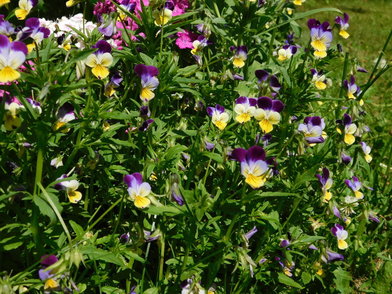 This tiny flower is one of the first to bloom for me in the Spring, and sometimes continues to flower through the Fall until the snows cover it. It is such a small, insignificant plant, yet so worthy of its name! I even have a few plants growing in pots on the kitchen windowsill, and they are indeed a comfort for my winter-weary heart! Viola tricolor is a native throughout most of Europe, as well as North Africa and parts of Siberia and India. Gerard, who calls it "Hartes-ease" and "Paunsie", writes that it "groweth in fieldes in many places, and also in gardens". As Robert Buist remarks, "The simplicity and and striking beauty of this lovely little flower has attracted notice from the earliest floral times". Shakespeare knew it well, as did many other early writers, and the legends associated with it are so numerous that I think a whole book could be written about this flower alone! It gets its botanical name from the fact that the flowers are usually, as Gerard says, "of three sundrie colours...that is to say, purple, yellow, and white or blew: by reason of the beuatie & braverie of which colours, they are very pleasing to the eie". But this dear little flower goes by an amazing number of names. In America, it is commonly known as Johnny-jump-up. The name Pansy comes from the French word Pensees, or thoughts. Shakespeare mentions this in Hamlet: "There's pansies, that's for thoughts"; and Ben Jonson writes: "I pray, what flowers are these? The pansie this; O, that's for lovers' thoughts." Other names include, Love-in-Idleness (as in A Midsummer Night's Dream), Cuddle/Cull/Call-me-to-you, Meet-me-in-the-Entry, Three-Faces-Under-a-Hood, Godfathers and Godfathers, Stepmother, Bouncing Bet, Kiss-her-in-the-Buttery, Kit-run-in-the-Fields, Ladies' Delight, Battlefield Flower, None-so-pretty, Flame Flower, Pink of My John, Herb Trinitatus, and, as Phillips says, "others equally whimsical and unappropriate". 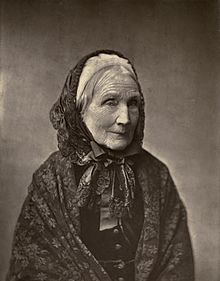 Mary Botham Howitt Mary Botham Howitt But I think Heartsease is the sweetest name of all! Louise Beebe Wilder tells us that "The little Pansy was deemed a potent heart remedy or cordial and so received the name of Heartsease". But others say that it got this name from the fact that it was used in ancient times as a love potion. Regardless of how it came about, it certainly caught the attention of many writers and poets! Mary Botham Howitt (1799-1888) wrote these lines: "Heart's Ease! one could look for half a day Upon this flower, and shape in fancy out Full twenty tales of love and sorrow, That gave this gentle name." 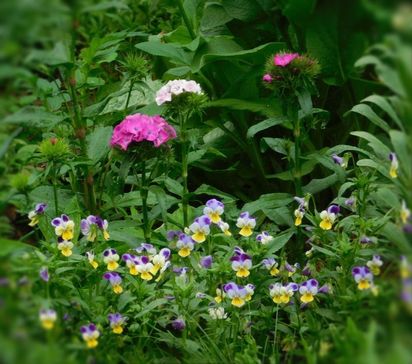 "Heartsease in my garden bed, With Sweet William white and red" "Heartsease in my garden bed, With Sweet William white and red" There is a delightful story about how the Heartsease or Pansy came into our gardens... There was once a little plant who was so shy that it crept into a secluded corner and there, under the shade of some taller plants, unfolded its blossoms. But it was soon discovered by a little bird, who sang of its beauty to the whole world. One day, an angel who had come to earth on a mission of mercy, heard the bird singing and asked to be led to it. When she saw the modest flower, the angel cried, "Ah! how lovely you are! Too lovely to dwell alone in the shadows. You should be a flower in the garden of angels. But wait, I have thought of something even more beautiful for you. You shall be the angel's blossom, but you shall bloom in the land of man. Go, sweet Pansy, bloom in every land and bring to all people sweet thoughts of peace and love and faith". Then the angel kissed the flower, leaving an imprint of her face on each blossom. The ending to this story explains how it came to be called Herb Trinitatus, or Trinity, Flower... The kiss of the angel gave it a perfume sweeter even than the Violet. But since the Pansy grew in fields, people were trampling on and destroying the crops whilst looking for it. So the Pansy prayed to the Holy Trinity to take away its fragrance so that it would no longer be sought. Its prayer was heard, and the name Trinity Flower was given to the self-sacrificing little blossom. This lovely poem also suggests that it was planted by "mercy's angel": The Heartsease There is a little flower that's found In almost every garden ground, 'Tis lowly but 'tis sweet; And if its name express its power, A more invaluable flower You'll never, never meet. I said in every garden ground; Perhaps in Eden 'twas not found, For there it was not wanted; But soon as sin and sorrow came, The flower received its gladdening name, By mercy's angel planted. My child! if God within our bower Should plant this lovely flower, To tend it be our duty; Then, should there be a smile or tear, So it be mutual, it will rear, Unfold, and show its beauty." ~Anonymous 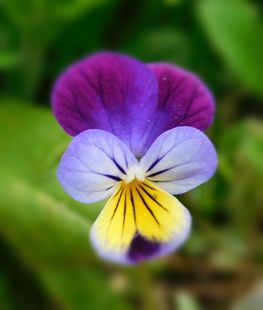 And James Russel Lowell penned these lines in the beginning of his book of poetry entitled, Heartsease and Rue: "Along the wayside where we pass bloom few Gay plants of heartsease, more of saddening rue; So life is mingled; so should poetry be That speak a conscious word to you and me." John Bunyan gives a beautiful tribute to Heartsease in The Pilgrim's Progress. When Christiana and her sons were passing through the Valley of Humiliation with Great-heart as their guide, they paused to listen to a boy singing as he tends his father's sheep. When the lad finished his song, Great-heart turned to them and said, "Do you hear him? I dare to say that this boy lives a merrier life, and wears more of that herb called 'hearts-ease' in his bosom, than he that is clad in silk and velvet". There is a wonderful children's story about a fairy who wanted to change herself into a flower. She entered a garden, and all the flowers vied with one another to convince her that its was the best lot. The Rose called herself the queen of flowers, the lily showed all her regal beauty, and so on with the Dahlia, Morning Glory, and Iris. But still the fairy stood irresolute. Finally, a little flower growing in a crack of the garden wall cried out, "Be a Pansy!". "Nay", said the fairy, "you are but a weed, and you have no name." "Haven't I?", said the Pansy, "Go to the poor man's garden and ask him my name-he'll tell you it is Heartsease; and where will you find a better one than that? Oh, be a Pansy!" "Well, really", said the fairy at last, "I think I will." In yet another fairy tale, the fairies were gathered on Midsummer's Eve to discuss what they could do to make the world a brighter place. One of them suggested that they make a new flower, and the rest agreed. So they got out their corn cups and their brushes of dandelion down and set to work. They took blue from the sky, red from the sunset, yellow from sunbeams, and brown from earth, and mixed them together. All night they worked, and when morning came, there were the flowers beautifully painted. Some of them had drawn each others' likenesses and that is why we often see little faces on these flowers. The world has been brighter and better since that night. 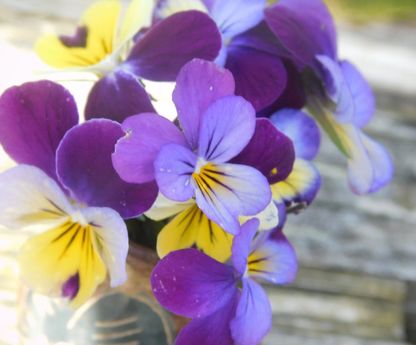 This humble member of the Violet family (Violaceae) is thought to be the ancestor of the larger-flowered Garden Pansies which began to be widely cultivated in the 19th century. (Although they were apparently still something of a novelty in Texas in 1878, when a Mrs. J. D. H. reported to Vick's Monthly Magazine that total strangers would come to her garden to see "them flowers that have faces"!) I love the large Pansy too, and have a tray of Swiss Giants seedlings on my desk right as I write. But the little Heartsease will always have a place in my garden and in my heart. I edged my herb garden with them last year and they were so lovely! In his Flora Historica (1824), Henry Phillips suggests planting them in masses: "When seen individually the flower must be noticed with admiration, yet it is not calculated to make a figure in the garden unless planted in large clumps; but when a considerable plot of rising ground is covered with these flowers, the appearance cannot be equaled by the finest artificers in purple and gold". (I should also mention that the flowers have a very pretty way of bowing their heads in wet weather to protect their "faces" from the rain!) Heartsease is considered an edible flower and has also been used medicinally for a wide variety of complaints, including epilepsy, asthma, cough, skin problems, and heart ailments. But by Phillips' time, it was "nearly if not altogether neglected, for fashion creeps even into our pill boxes". Mrs. Grieve says however, that "it was formerly official in the United States Pharmacopoeia" and notes that it was then "still employed in America in the form of an ointment and poultice in eczema and other skin troubles, and internally for bronchitis". I believe it is still used by some herbalists for both eczema and acne, and I am looking forward to experimenting with it myself this year! 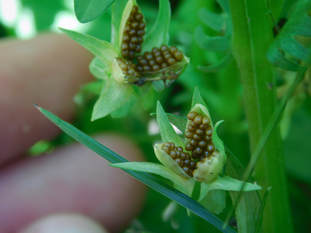 I would be greatly interested to know how the seeds are collected on a large scale by commercial seed growers! My method was to go out at least once a day and gather all the seed capsules as they burst open, but before they had thrown the seeds far and wide. As our neighbor said when he found me at it one day, "You have to sneak up on them"! I then brought them in and made the mistake of laying them out to dry on a table. After a while I noticed that my supply of seeds wasn't increasing as much as it ought to. I suspected the "mousies", so I put them in a jar and covered it with cheesecloth. The next day, I found several seeds caught in the cheesecloth, and there were even a few seeds on the table around the jar. Evidently they are thrown with quite a force as soon as they dry, no matter whether they are still on the plant or no! One of those seeds landed in the pot with my Amaryllis, which led to the happy discovery that Heartsease will grow quite happily on a windowsill even during the shortest days of winter! This little flower is so beautiful, so easy to grow, and it will cheer your heart throughout the year! "The foxglove on fair Flora's hand is worn, 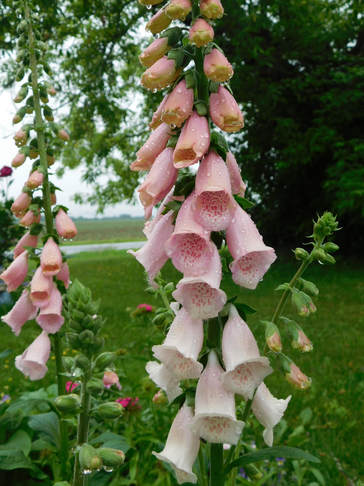 'Apricot Beauty' 'Apricot Beauty' Here is yet another lovely flower rich in history and legends! The Foxglove has gone by many quaint names in the European countries to which it is native. In the British Isles, it was called Folk's Glove, Fairy's Glove, Fairy Thimbles, and Fairy Cap. It was believed that the fairies take refuge in the blossoms whenever a human footstep is heard approaching. There was also a superstition that picking the flowers would bring bad luck, since it robbed the "wee folk" of their favorite hiding place. It is said that when the Foxglove bends and sways so gracefully, it is really bowing to the fairies passing by, and has nothing to do with the breezes. The spots inside the flowers were supposed to be the fingerprints of elves and, according to one Irish legend, are a warning of the plant's poisonous properties, which also earned it the name of "Dead Man's Thimbles". Parkinson writes: "Wee call them generally in English, Foxeglove; but some (as thinking it to bee too foolish a name) doe call them Finger-flowers, because they are like unto the fingers of a glove, the ends cut off". There is some uncertainty about how it came to be called Foxglove. One explanation is that it is a corruption of Folk's Glove, which is indeed one of its oldest names. And, yet another legend says that bad fairies gave it to the fox to put on his toes, that he might prowl around the hen houses silently. But others think that the original Anglo-Saxon word was probably not Foxes-glofa (Fox-glove), but rather Foxes-gleow (Fox-bell), after an old musical instrument with bells hung on an arches support, which the plant resembles. 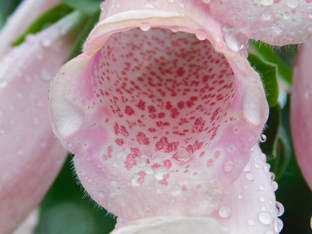 Elves' fingerprints Elves' fingerprints The Norwegians did call it Revbielde, or Foxbell. One Norse legend tells how foxes wear the flowers as bells around their necks to escape the hunters, who are frightened away by the eerie sound. In France, it was known as Gant de Notre Dame (Gloves of Our Lady) and Doigts de la Vierge (Virgin's Fingers). In Germany, it was called simply, Fingerhut (Thimble), and Leonhard Fuchs (the 16th century German botanist after whom Fuchsia is named), gave the Foxglove its Latin name Digitalis, from Digitabulum, which means, "a thimble". Although it is a "violent poison", the Foxglove has long been used medicinally. In 1554, Dodoens prescribed it boiled in wine as an expectorant, and the bruised leaves were often used for sores and ulcers. Mrs. Grieve notes that "it seems to have been in frequent use in cases in which the practitioners of the present day would consider it highly dangerous". The Foxglove's true usefulness was discovered by Dr. William Withering (1741-1799), who tells the story in his wonderful Account of the Foxglove (1785). To summarize it briefly, in 1775, he learned about an old woman in Shropshire who had a secret remedy which had cured patients suffering from the dropsy (and old word for edema, causes by heart failure) when doctors' treatments had failed. This remedy was made up of about 20 herbs, but Dr. Withering realized that the active ingredient was none other than Foxglove. After much experimenting, he came to the conclusion that Digitalis purpurea "merited more attention than modern practice had bestowed upon it". His valuable discovery is still used today. "The Foxglove leaves, with caution given, Another proof of favouring Heaven Will happily display. The rapid pulse it can abate, The hectic flush can moderate. And blest by Him whose will is fate, May give a lengthened day!" Last summer, after handling my Foxglove plants and unconsciously touching my face, I noticed a very bitter taste and afterwards had a mild headache, with dizziness and nausea. I would be interested to know if anyone else has noticed this after working around their Foxgloves, but I wouldn't recommend experimenting! Mrs. Grieve writes that "In large doses, the action of Digitalis on the circulation will cause various cerebral symptoms, such as seeing all objects blue, and various other disturbances of the special senses". More severe cases of poisoning can be fatal. 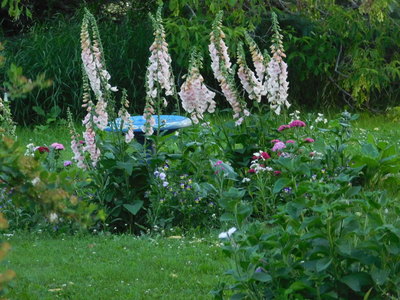 Foxgloves and Sweet Williams in my "herb garden"! Foxgloves and Sweet Williams in my "herb garden"! Foxglove is truly the "pride of the garden". It is a biennial, but will often persist as a short-lived perennial. It will also self-sow wherever it is happy, and a single plant can produce more than one million seeds! It is beloved by bees, and Mrs. Grieve observes that it is "much visited by other smaller insects, who may be seen taking refuge from the cold and wet in its drooping blossoms on chilly evenings". In the wild and in older cultivars, the flowers bloom on one side of he stem only, but there are now many hybrids which have flowers all the ways around the stalk (and often in rather gaudy colors, too). I love the old kinds best, and my favorite is the soft-colored "Apricot Beauty". In A Woman's Hardy Garden, Mrs. Ely suggests planting Foxgloves behind Sweet Williams or with peonies, where they will "produce an effect so beautiful that you will simply have to go and look at them many times a day". A cottage garden certainly should not be without the beautiful Foxglove, and one cannot have too many of them, in my opinion! The last 10 days or so have been very busy, which explains my somewhat longer than usual silence! I've been taking care of lots of babies! On the 21st, my dog Carina gave birth to 6 sweet golden puppies! There are 4 boys and 2 girls... Besides puppies, it's also seed-starting time! I have celery, onions, heartsease, pansies, and heliotrope planted so far. The heartsease have already come up! Celia Thaxter's words were going through my mind as I planted the pansies: "The Pansy seeds lie like grains of gold on the dark soil. I think as I look at them of the splendors of imperial purples folded within them, of their gold and blue and bronze, of all the myriad combinations of superb color in their rich velvets. Each one of these small golden grains means such a wealth of beauty and delight!" I also have several bigger heartsease plants (the ones I planted last month to get me through the rest of winter). I just moved them into more decorative pots and they are looking like they could bloom fairly soon! Temperatures have been milder, but I still have to traverse the "mountain pass" to get to my greenhouse. And there appears to be a small glacier forming in front of my flower gardens! :D But when the sun shines, it is glorious! It is so nice to feel some warmth again! My sister snapped these pictures of sunshine piercing through the fog early yesterday morning... And that's all of my update for now! :)
|
AuthorI am a passionate gardener and seed-saver, who also enjoys playing the violin and accordion, running, spending time with my 4 golden retrievers, keeping chickens, photography, and reading. Archives
March 2019
|
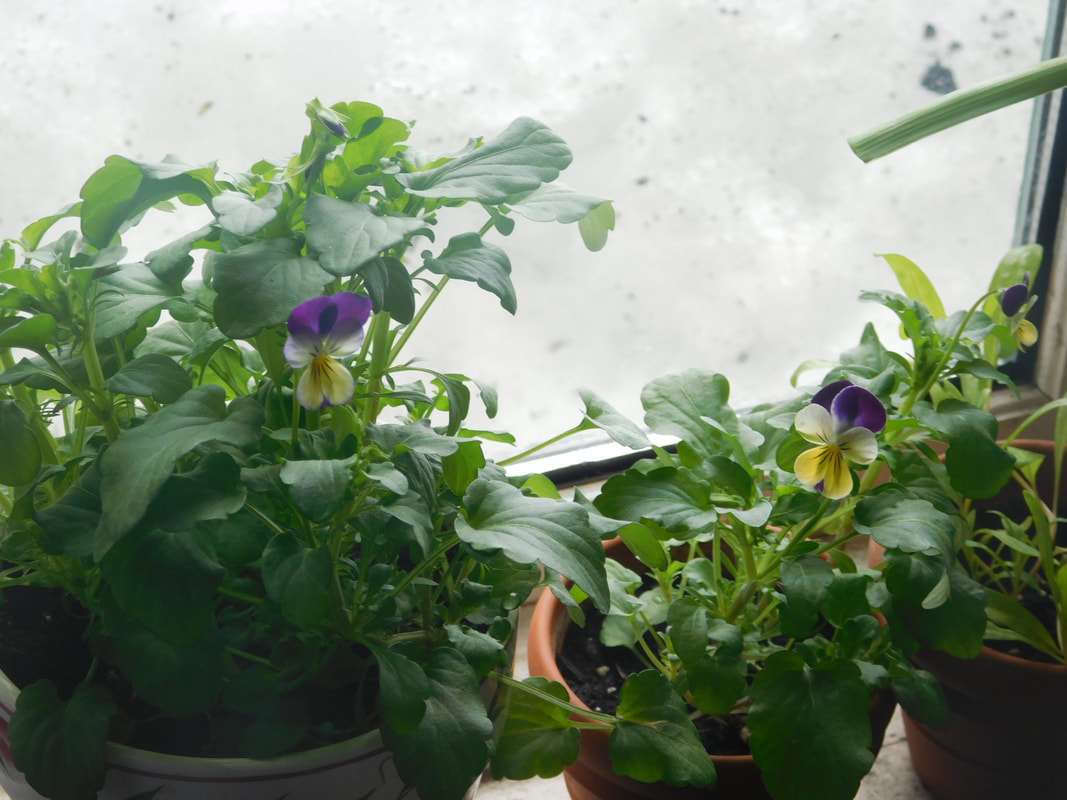

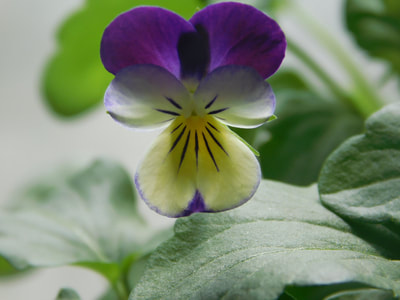
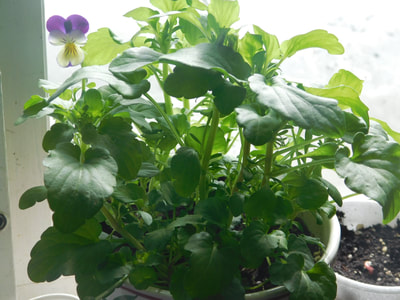
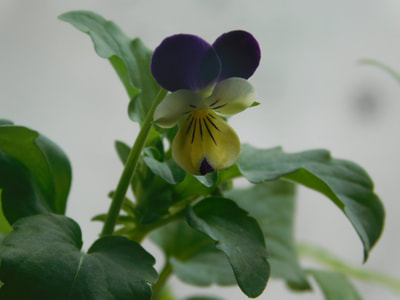

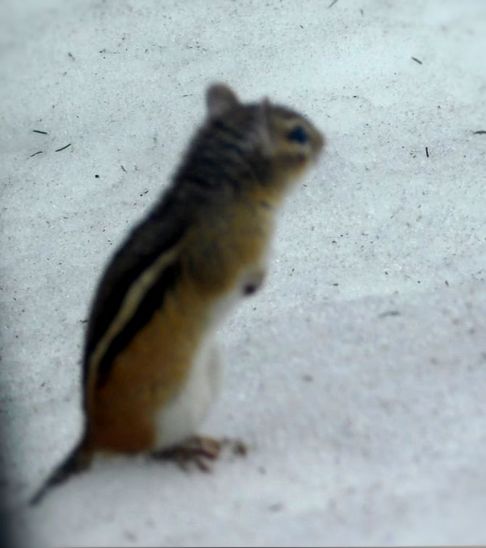
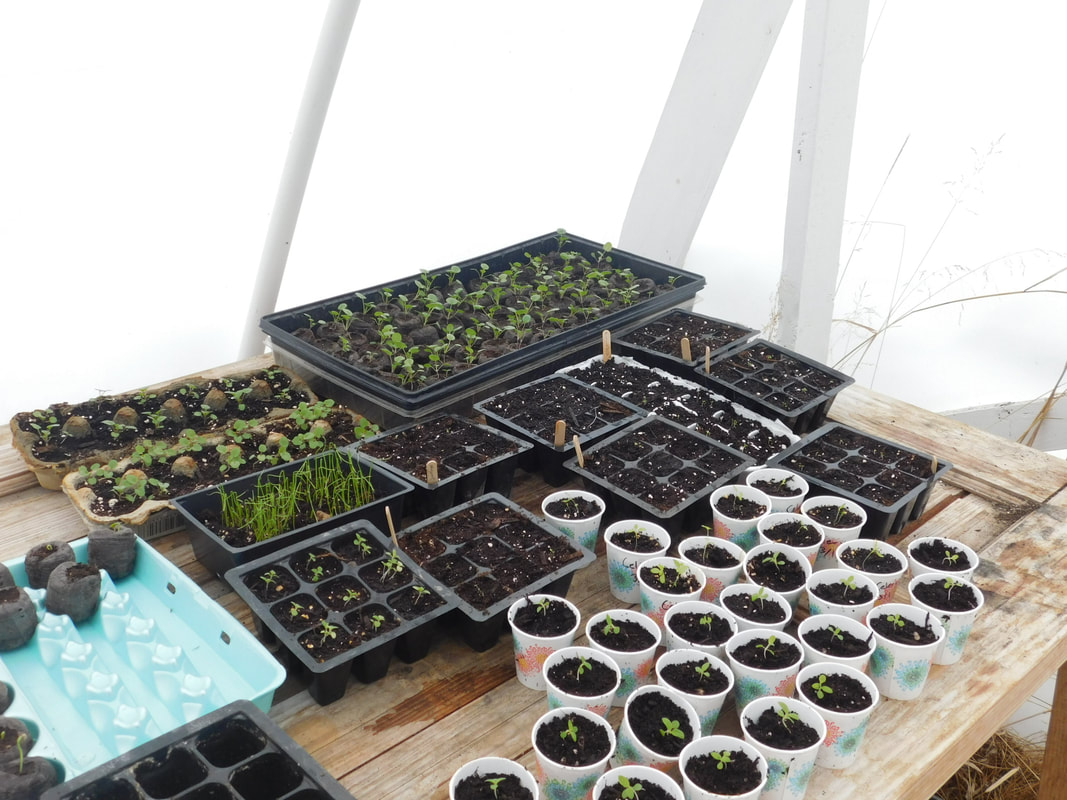
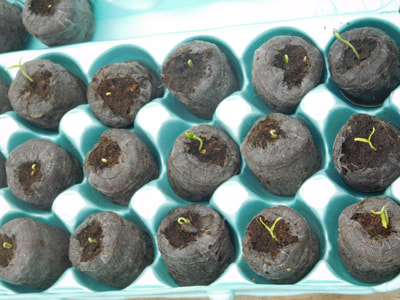
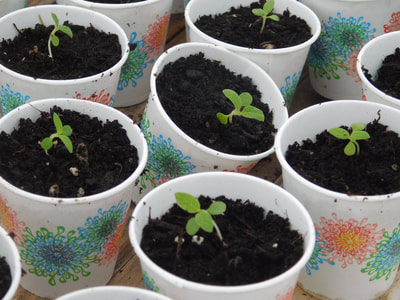

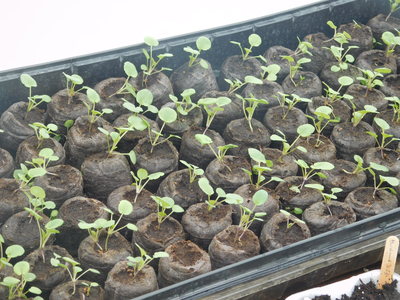
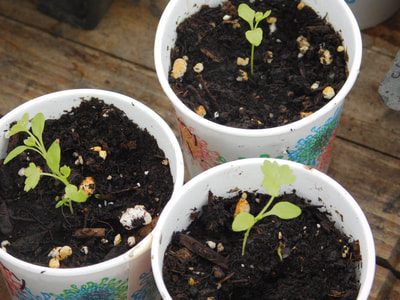
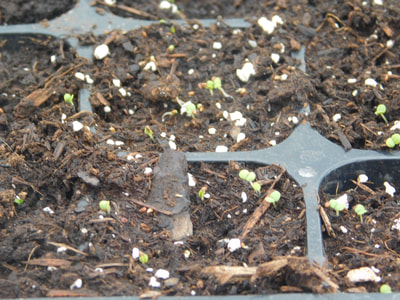


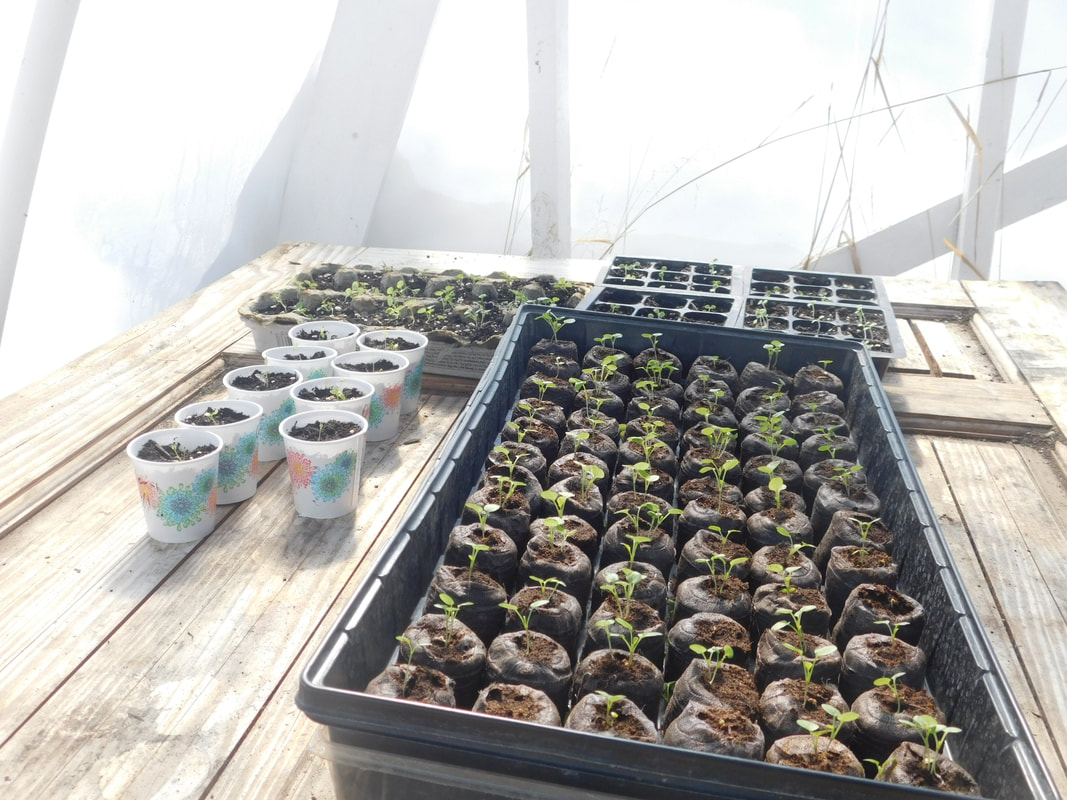
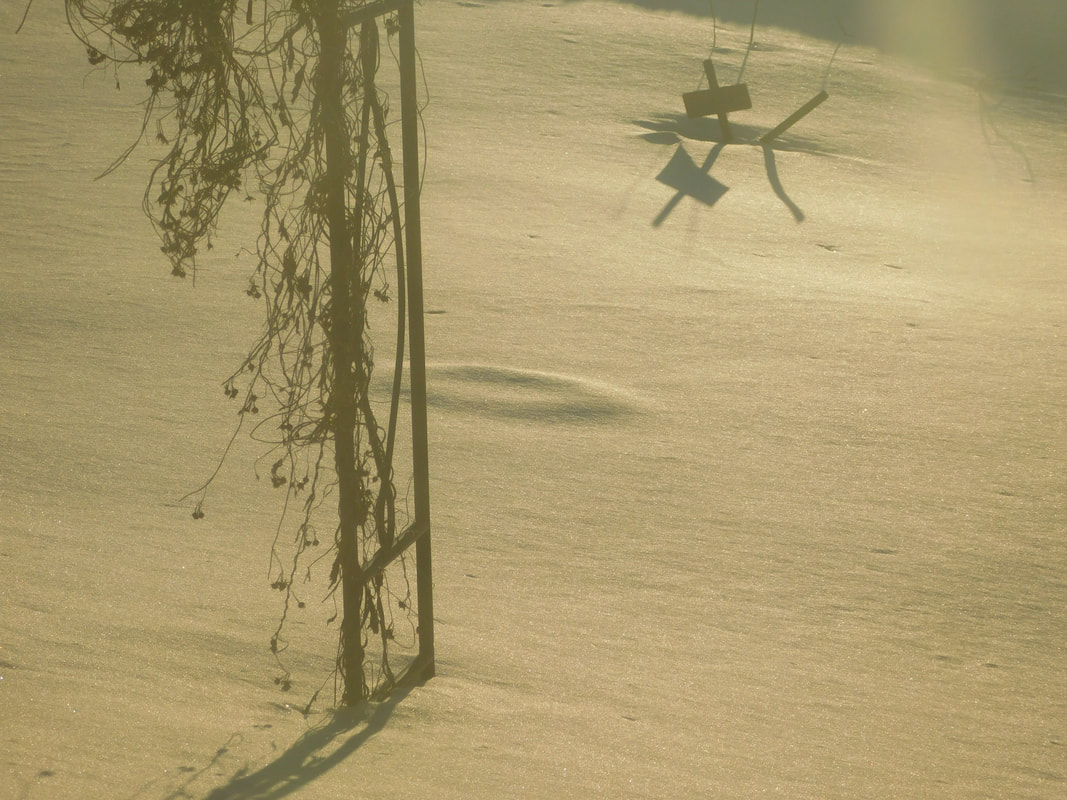

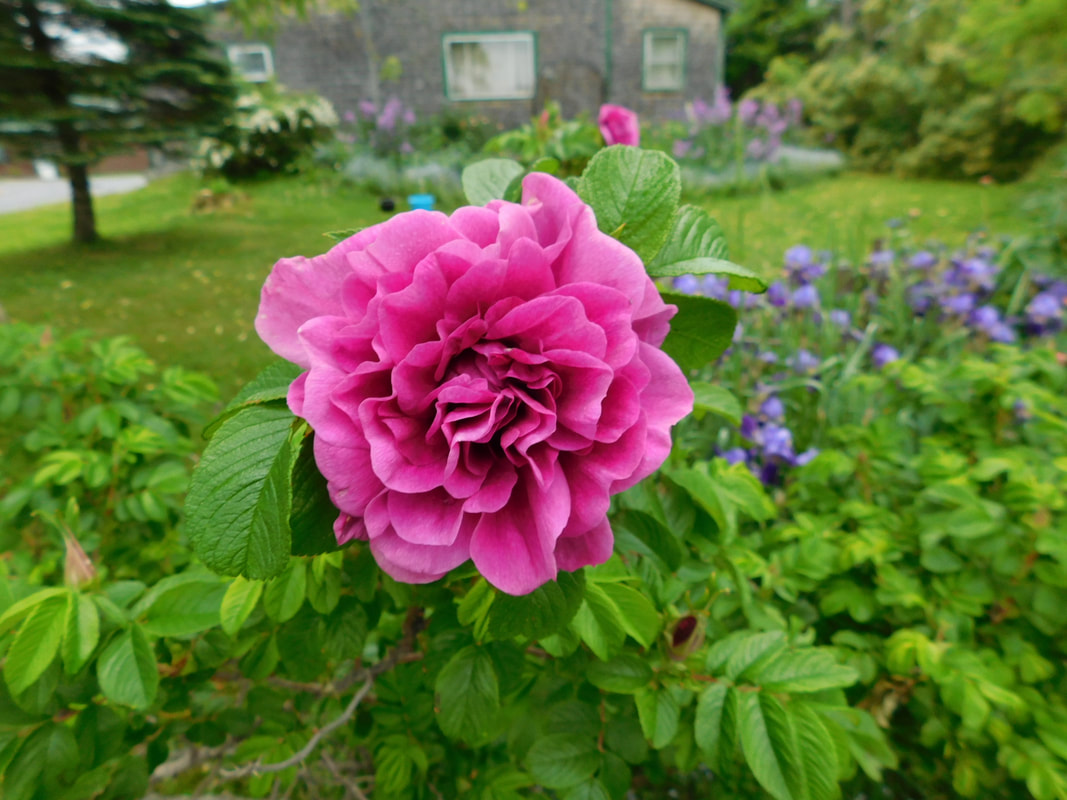

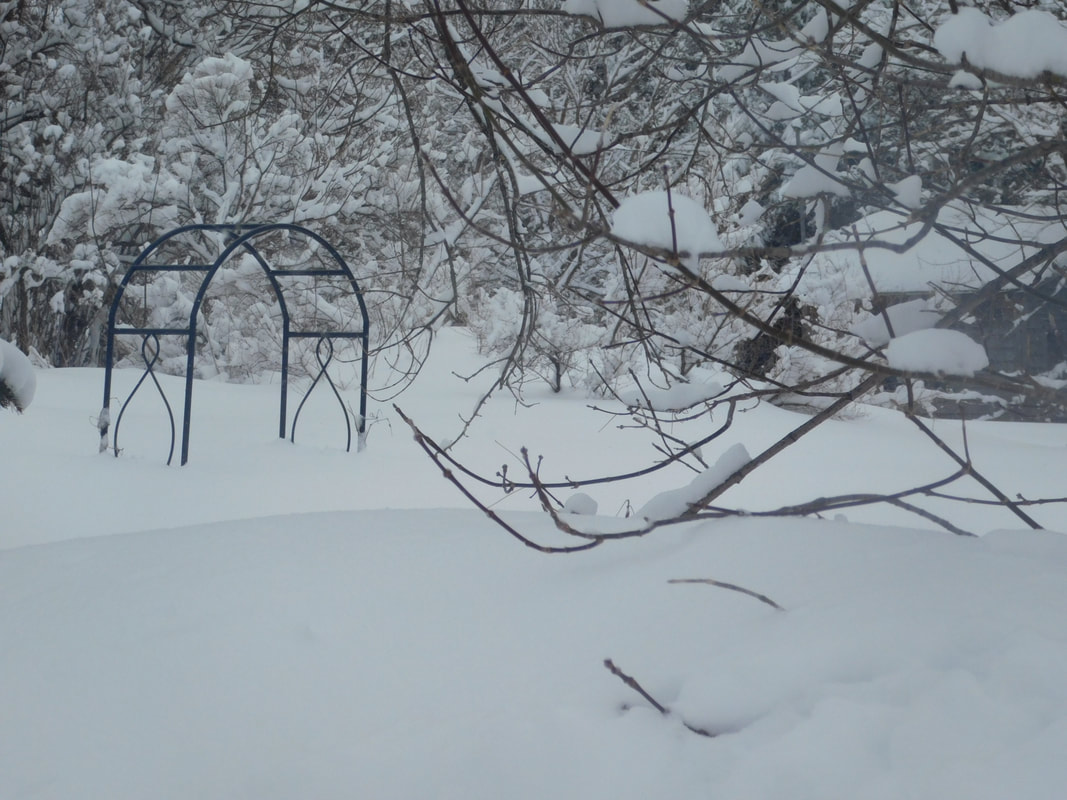
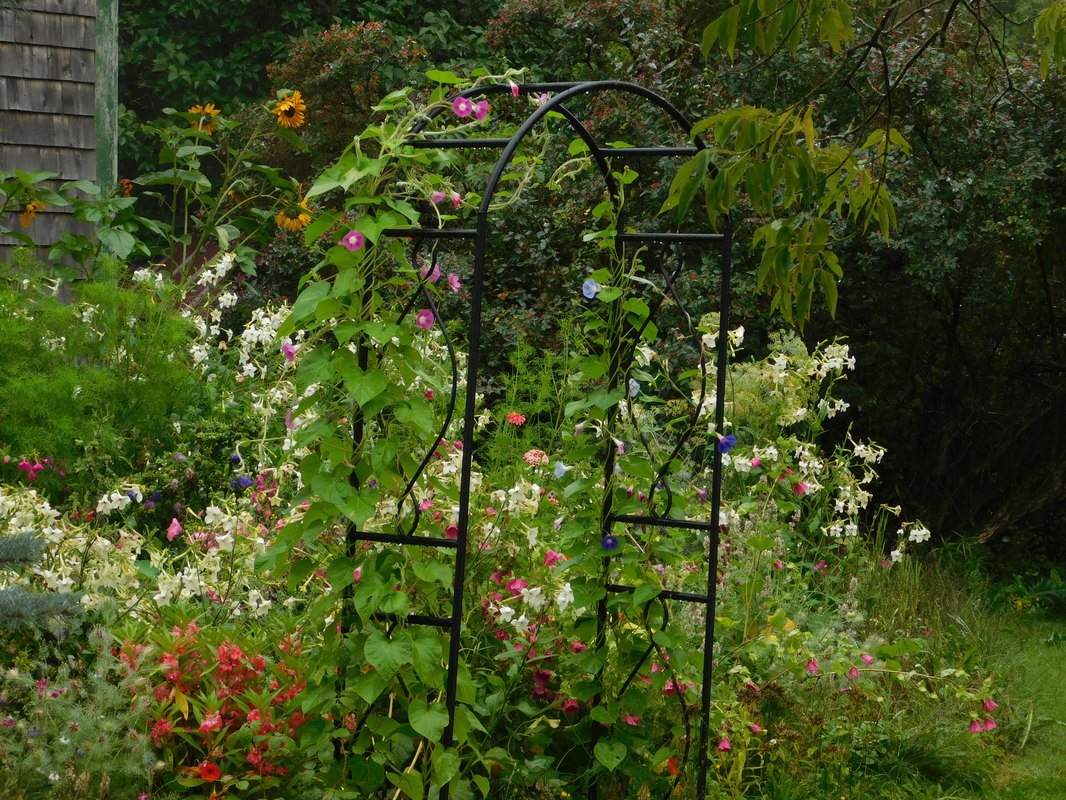


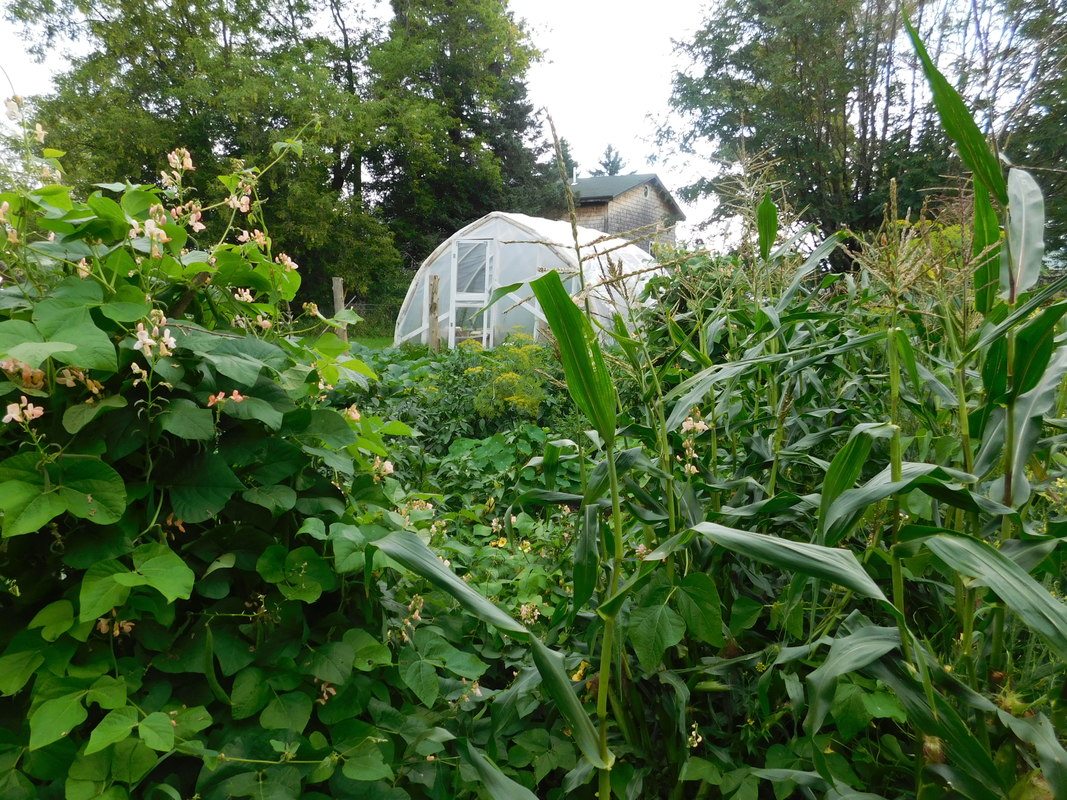
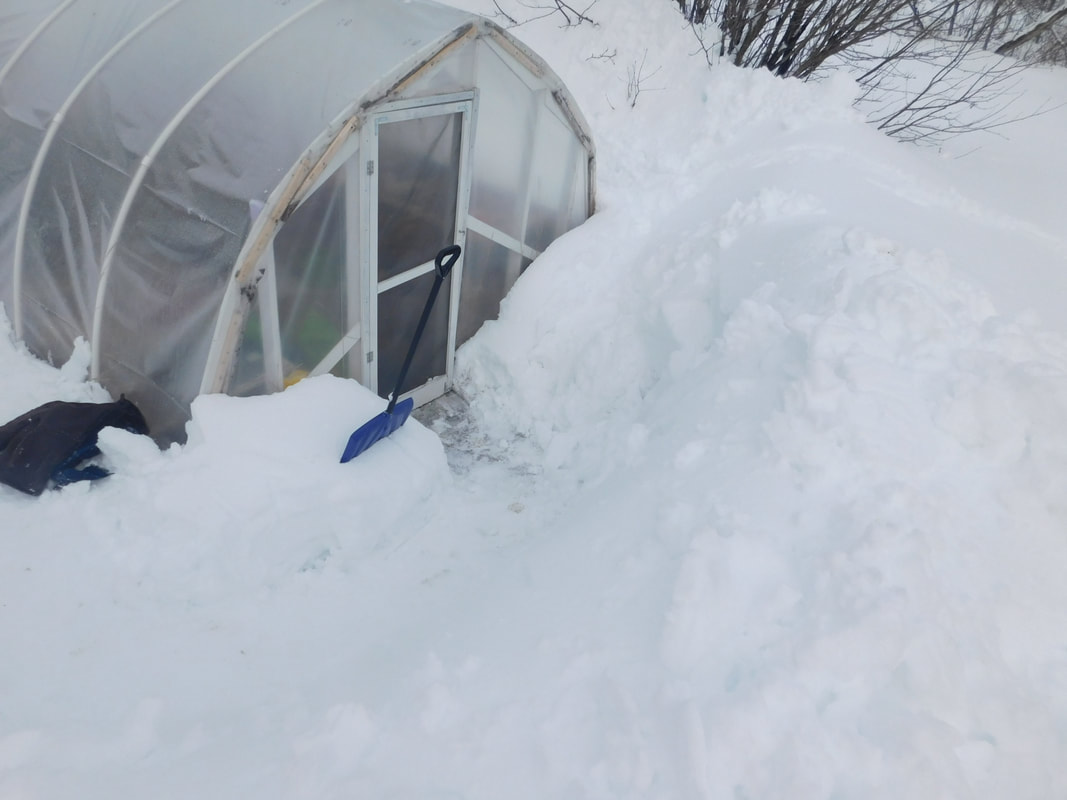

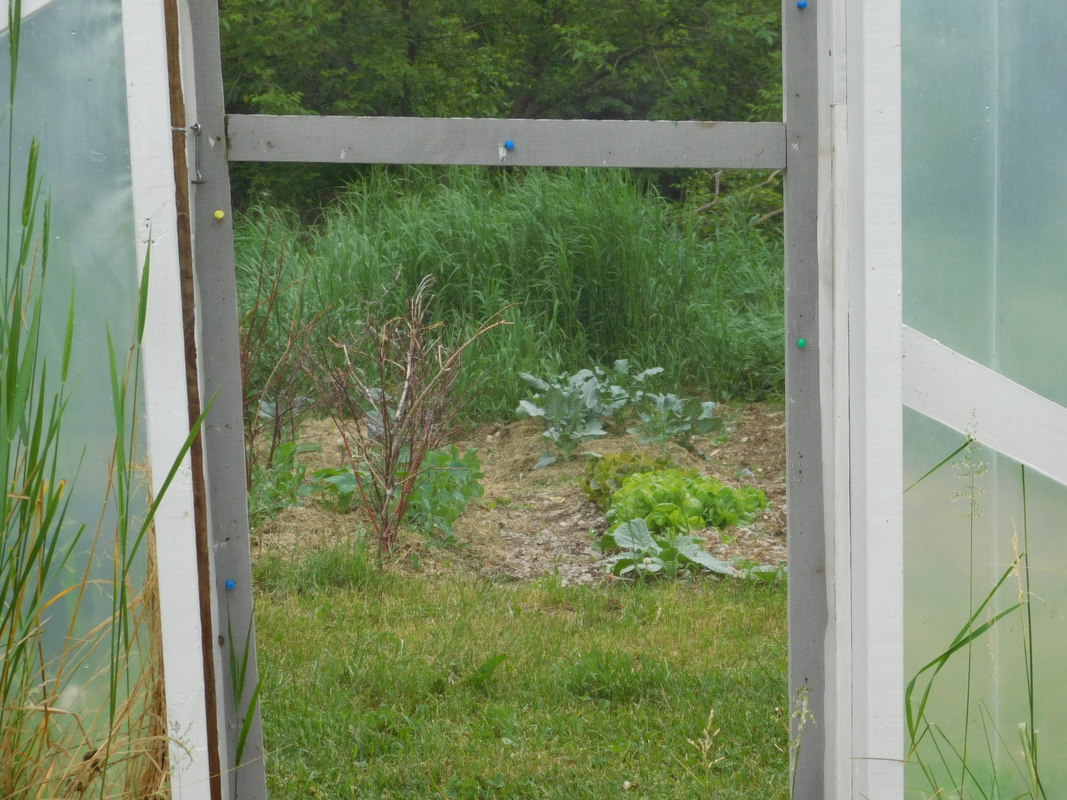
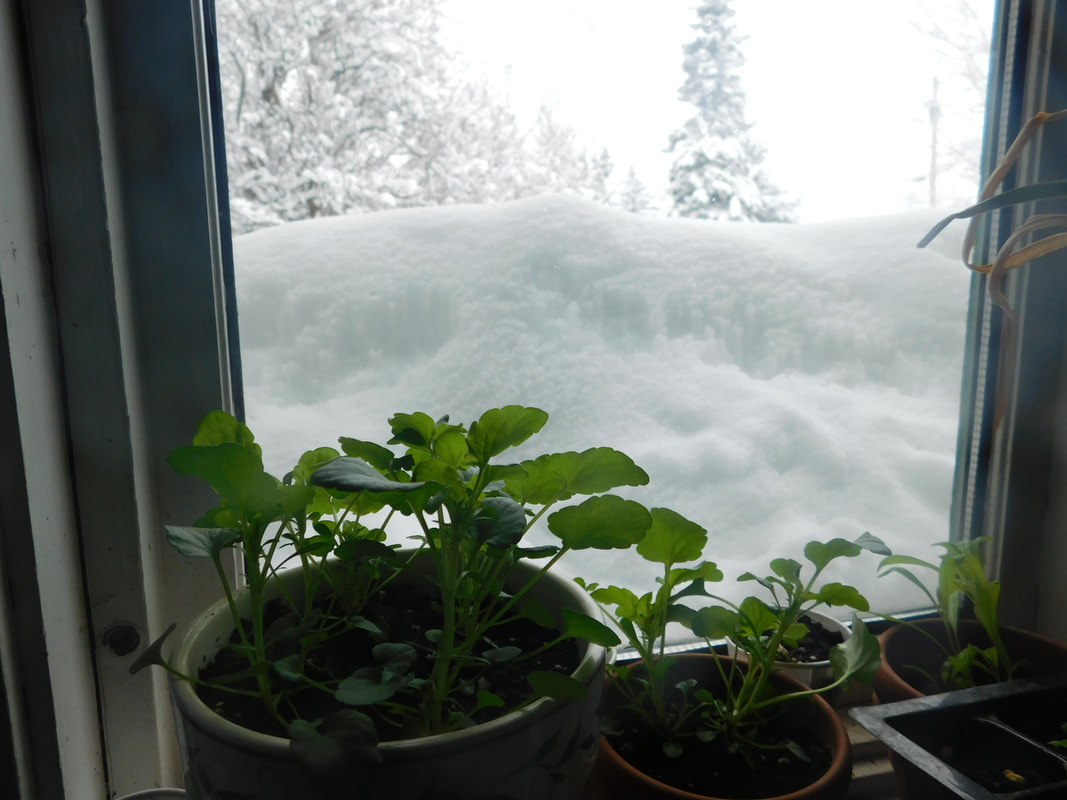
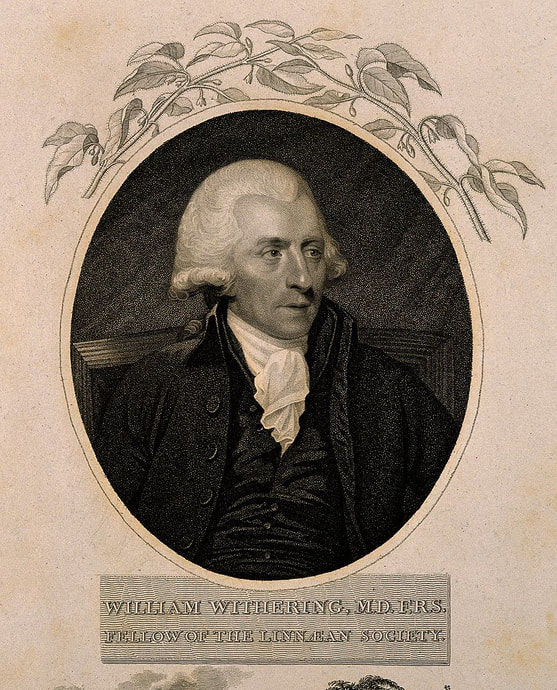





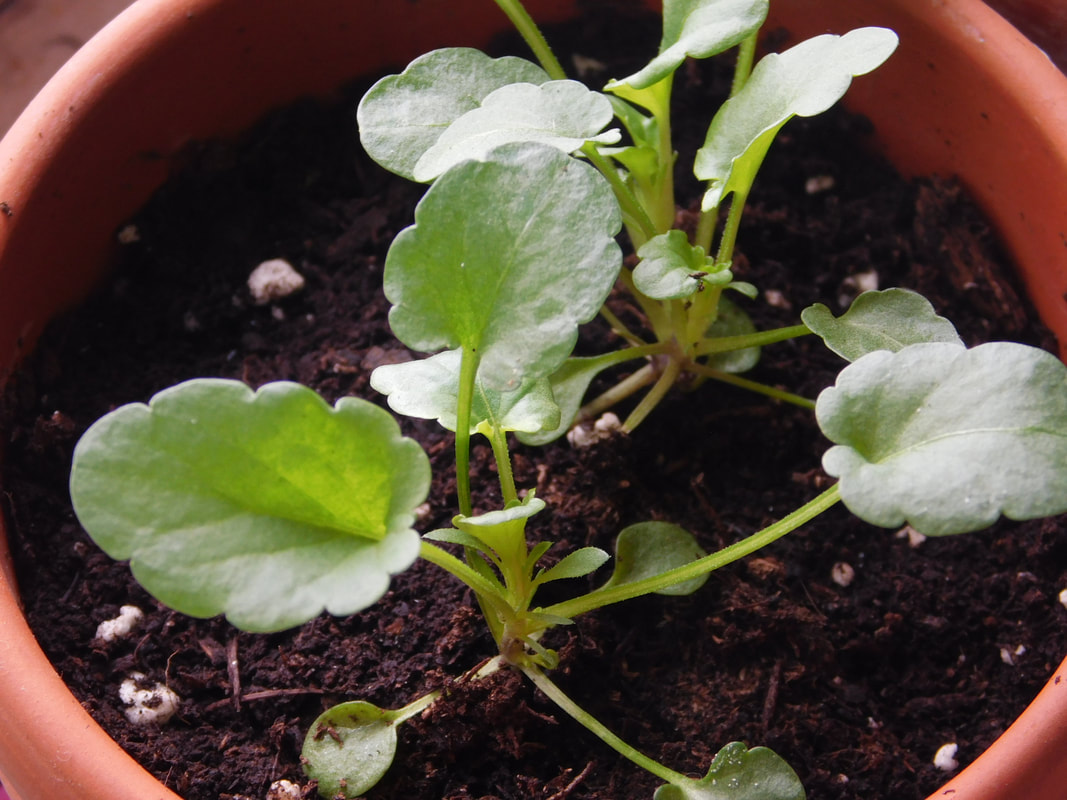




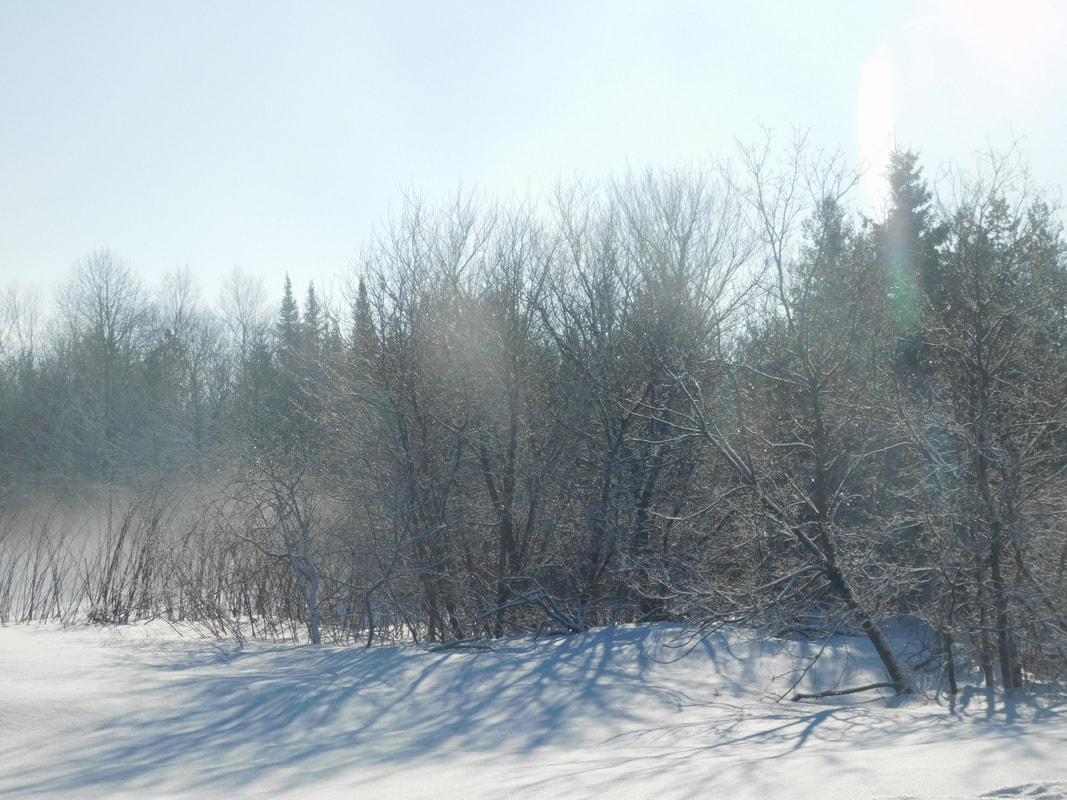

 RSS Feed
RSS Feed
